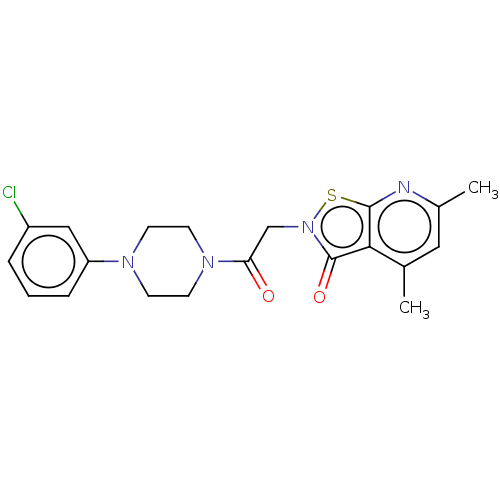BDBM50204327 CHEMBL3906347
SMILES Cc1cc(C)c2c(n1)sn(CC(=O)N1CCN(CC1)c1cccc(Cl)c1)c2=O
InChI Key InChIKey=HSWXAELHSCLZBD-UHFFFAOYSA-N
Data 4 IC50
Activity Spreadsheet -- Enzyme Inhibition Constant Data from BindingDB
 Found 4 hits for monomerid = 50204327
Found 4 hits for monomerid = 50204327
Affinity DataIC50: 3.74E+5nMAssay Description:Inhibition of COX-1 (unknown origin) using arachidonic acid as substrate preincubated for 2 mins followed by substrate addition in presence of TMPD b...More data for this Ligand-Target Pair
Affinity DataIC50: 6.05E+5nMAssay Description:Inhibition of COX-2 (unknown origin) using arachidonic acid as substrate preincubated for 2 mins followed by substrate addition in presence of TMPD b...More data for this Ligand-Target Pair
Affinity DataIC50: 3.75E+5nMAssay Description:Inhibition of COX-1 (unknown origin) using arachidonic acid as substrate preincubated for 2 mins followed by substrate addition in presence of TMPD b...More data for this Ligand-Target Pair
Affinity DataIC50: 6.05E+5nMAssay Description:Inhibition of COX-2 (unknown origin) using arachidonic acid as substrate preincubated for 2 mins followed by substrate addition in presence of TMPD b...More data for this Ligand-Target Pair
